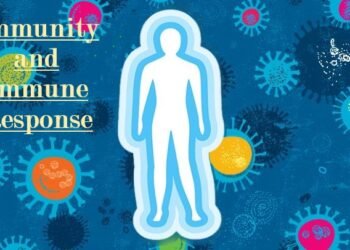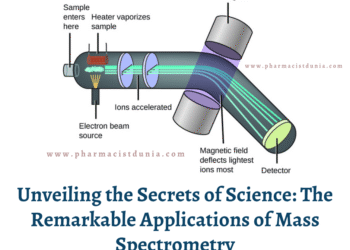Free radical:
existence (hence the term ‘free’) that contains one or more unpaired electrons.
can be generated in a wide variety of chemical and biological systems,
including the formation of plastics, the ageing of paints, the combustion of
fuels and in the human body.
denote free radicals. The simplest free radical is an atom of the element
hydrogen, with one proton and a single electron. Examples of free radicals
include- Superoxide anion (O2•–), Hydroxyl radical (OH•),
Thiyl radicals (RS•).
Reactive oxygen species:
in the biomedical free radical literature, is a collective term that includes
not only oxygen-centered radicals such as O2•–
and OH•, but also some non-radical
derivatives of oxygen, such as hydrogen peroxide (H2O2),
singlet oxygen 1Dg, and hypochlorous
acid (HOCl).
Antioxidant:
also known as “free radical scavengers”. Some antioxidants are made naturally by
the body. Others can only be obtained from external (exogenous) sources,
including the diet and dietary supplements.
Antioxidant
defense:
other activated oxygen species are continuously formed in our body and on top of
their physiological function they may also be damaging to the cellular
integrity due to its high reactivity. They react with all the present
biomolecules and they affect their normal function. Thus living organisms have
developed a number of defense mechanisms known as the “antioxidant defense
system”.
multifactorial. In the instance, they try to prevent the production of reactive
oxygen species. On a second level, they try to reduce these molecules, and on a
third level they repair the damage caused by molecules.
Mechanism
of action of antioxidant defense system / How antioxidant defense system works
in body:
be organised in the following way:
Non-enzymic
system: Molecules that can react directly with reactive oxygen species and
other free radicals, or with the products of these reactions without the
involvement of any special enzyme. These antioxidants include
glutathione, vitamin C, vitamin E, beta carotenes, uric acid and the flavonoids.
Enzymes:
These include catalase, superoxide dismutases and glutathione peroxidases.
the antioxidant defense mechanism is a complex process and includes both
endogenous and diet-derived molecules. For example-
- Superoxide dismutase enzymes (SODs) remove O2•– by accelerating its conversion to H2O2.
- Catalase enzymes convert H2O2 to water and O2.
- But more important H2O2 removing enzymes in human cells are the glutathione peroxidases
- (GSHPX), one of the few classes of human enzymes that require selenium for their action.
- GSHPX enzymes remove H2O2 by using it to oxidize reduced glutathione (GSH) to oxidized glutathione (GSSG).
- Again, GSH can scavenge various reactive species (e.g. HOCl and ONOO–) directly, as well as being a substrate for GSHPX enzymes.
- α- Tocopherol is the most important free radical scavenger within membranes. It can inhibit lipid peroxidation by scavenging peroxyl radical intermediates and so halting the chain reaction.
Oxidative stress
between pro-oxidant and antioxidant agents, in favor of the former. This
imbalance may be due to an excess of pro-oxidant agents, a deficiency of
antioxidant agents or both factors simultaneously. The origin of
oxidative stress is an alteration of the redox status in cells, leading to a
cellular response to counteract the oxidizing action.
antioxidant defense enzymes (such as CuZnSOD, MnSOD and GSHPX) or toxic agents
that deplete such defenses.
For example many
xenobiotics are metabolized by conjugation with GSH; high doses can deplete GSH
and cause oxidative stress even if the xenobiotic is not itself a generator of
reactive species.
Increased
production of ROS/RNS, e.g. by exposure to elevated levels of toxins that are
themselves reactive species (e.g. nitrogen dioxide gas, NO2•)
or are metabolized to generate such species or by excessive activation of
natural ROS/RNS- producing systems.
How reactive species are generated in
the body:
constantly generated in the human body.
- Some are made by ‘accidents of chemistry’
For example-
leakage of electrons directly on to O2 from intermediate electron
carriers.
splits the O-H bonds in water to generate OH• and H•.
OH• reacts at a diffusion controlled rate with almost all molecules in living
cells. Hence, when OH• is formed in vivo,
it damages whatever it is generated next to the cell. Indeed, the harmful
effects of excess exposure to ionizing radiation on living organisms are
thought often to be initiated by attack of OH• on proteins, DNA and lipids.
is synthesized from the amino acid L-arginine by vascular endothelial cells,
phagocytes and many other cell types.
It helps to regulate blood pressure and
may be involved in the killing of parasites by macrophages.
radical (O2•–) is produced by phagocytic cells.
It helps phagocytes to kill bacteria.
can be produced by the action of several oxidase enzymes in cell, including
amino acid oxidases and xanthine oxidase.
H2O2 is used by
the enzyme thyroid peroxidase to help make thyroid hormones.
H2O2 is sometimes
used as an intracellular signal molecule.
H2O2 can inhibit
protein phosphatases and so increase net protein phosphorylation.
H2O2 can combine
with iron or copper ions to generate highly reactive OH•.
(or Cu+) OH• + OH– + Fe3+
(Cu2+)











